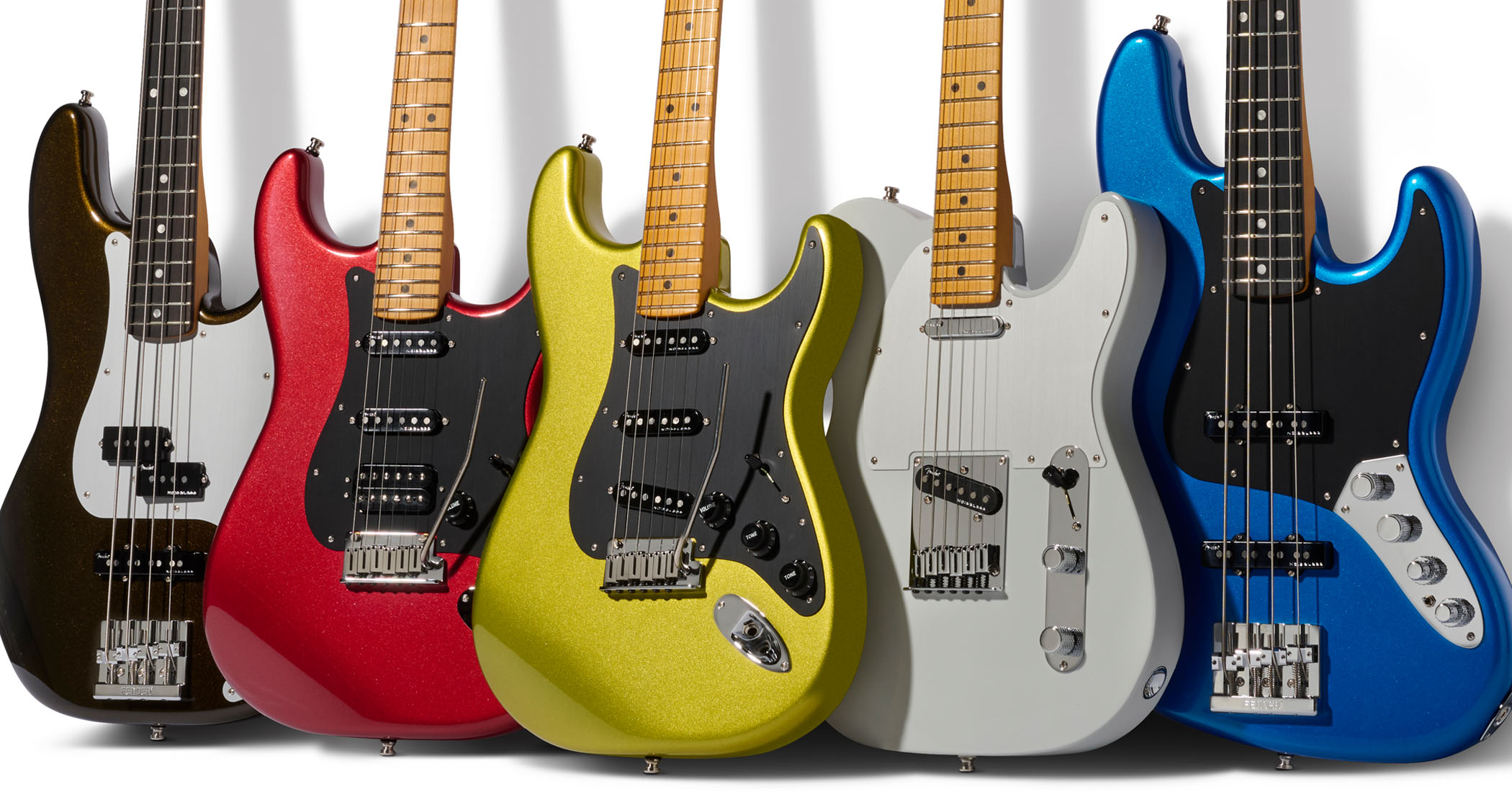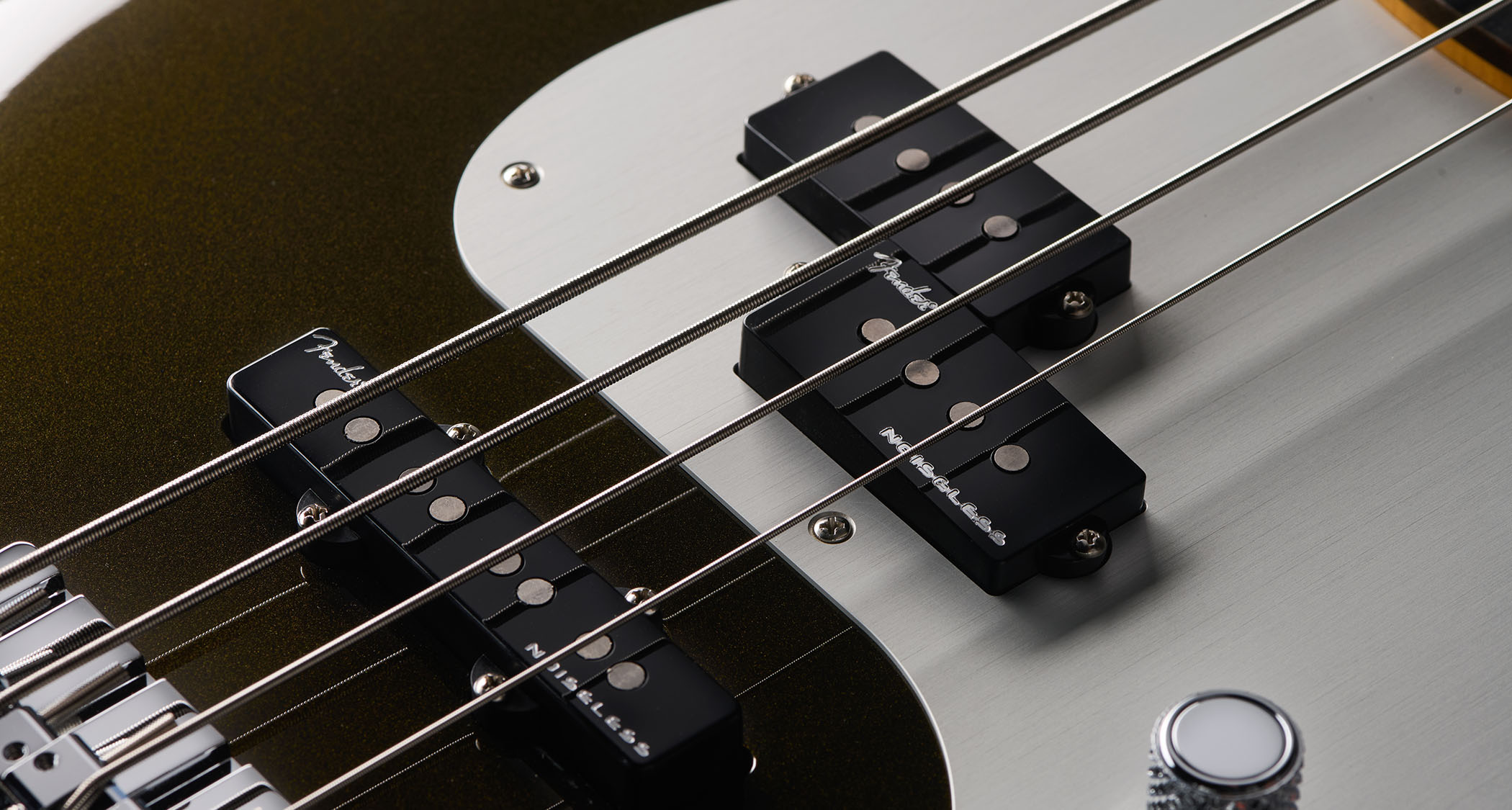“It’s designed to push boundaries and redefine what a Fender guitar can be”: Fender unveils the American Ultra II, US-made classic models revamped for high-performance feel and tone
The American Ultra II series features all-new pickups, compound radius fingerboards, premium components, fresh finishes and Fender’s “fastest-playing necks” as standard

Fender has unveiled the American Ultra II series, launching the most-advanced bass and electric guitars to have ever rolled off the production line at Corona, California.
This flagship sequel expands upon the high-performance ethos of the 2019 American Ultra range with upgraded electric guitar pickups, revised electrics, premium hardware, refreshed finish options, sculpted neck heels and ergonomically contoured body profiles, plus Fender’s “fastest-playing” necks.
Fender’s executive vice president of product, Justin Norvell, describes the American Ultra II models as as the “sports car” of the brand’s production models, applying all modern, player-friendly features to instruments that are recognisable as classic Fender designs.
“With the work and heart that went into creating the American Ultra II series, there's a lot of soul in these guitars,” says Norvell. “We refer to it as the ‘sports car’ of the Fender lineup, it’s designed to push boundaries and redefine what a Fender guitar can be, catering to both traditionalists and those exploring new, faster, and more intricate playing styles.”
There’s no Jazzmaster in this American Ultra II lineup but there is an offset in the shape of the Meteora, offered here as an electric and a four-string bass guitar.
The retro-futuristic Meteora is joined in the American Ultra II lineup by the Telecaster, Stratocaster, HSS Strat, Jazz Bass, Jazz Bass V and Precision Bass.


Pick up any model from the American Ultra II range and you’ll find a guitar or bass guitar with a Modern D (“slim with wide shoulders”) profile neck and satin-smooth finish, topped with a 10” to 14” compound radius fingerboard.
Want all the hottest music and gear news, reviews, deals, features and more, direct to your inbox? Sign up here.
Those fingerboards will either be ebony or maple, finish-dependant. They will definitely have rolled edges and glow-in-the-dark Luminlay side-dot fret markers, and when you consider this altogether, these models might give players who had been in the market for a Charvel a tough decision to make between a hot-rodded electric inspired by the original or the original inspired by the hot-rod.
“This is a guitar that doesn’t fight you,” says Norvell. “Instead, it gets out of the way, allowing you to focus purely on your performance, whether you’re playing soulful solos, fast riffs, or complex chord progressions.”


The American Ultra II models all share a lot of design DNA. All have solid alder bodies and bolt-on necks that have been quartersawn for increased stability. Graph Tech Tusq nuts come as standard, as do short-post locking tuners on the guitars and HiMass bridges on the basses. Fender has gone for the short-post tuners to improve the break angle off the nut.
Pickguards are fashioned from single-ply anodised aluminium and have a super-soft finish that doesn’t give you that nails-down-the-blackboard feeling that some brushed metals do.
Everything about these guitars is tactile, from the necks to the knurled metal knobs on the Tele, Meteora and the basses, and the soft-touch knobs of the Strat.

The American Ultra II models share a lot of design DNA. All have solid alder bodies and bolt-on necks that have been quartersawn for increased stability. Graph Tech Tusq nuts come as standard, as do short-post locking tuners on the guitars and HiMass bridges on the basses. Fender has opted for short-post tuners to improve the break angle off the nut.
Pickguards are fashioned from single-ply anodised aluminium and have a super-soft finish that doesn’t give you that nails-down-the-blackboard feeling that some brushed metal styles do.
Everything about these is tactile, including the knurled metal knobs on the Tele, Meteora and the basses, and the soft-touch knobs of the Strat.

The American Ultra II Stratocaster (£2,259/$2,199 to $2,249) is available in Ultraburst, Solar Flare, Avalanche, Noble Blue, Sinister Red and Texas Tea, with left-handed models in Texas Tea, Avalanche and Ultraburst.
These Strats are equipped with a trio of Ultra Noiseless Vintage Strat pickups, selectable via a five-way switch. But there’s also an S-1 switch to add the neck pickup to any position, while the treble bleed circuit ensures the guitar doesn’t get all muddy as you roll that volume back.


Those Ultra Noiseless pickups have an ingenious stacked-coil design, in which there is a top-coil designed around an Alnico V magnet, wound for traditional vintage Strat tone, and a second isolated coil whose job is solely to kill any unwanted hum.
This is a guitar that doesn’t fight you. Instead, it gets out of the way, allowing you to focus purely on your performance
Justin Norvell, Fender's EVP of product
A 2-point American Ultra Synchronized Tremolo with polished stainless steel block saddles, cold rolled steel bock and pop-in whammy bar presents a stable platform for your vibrato.
You will find all over the above on the HSS Strat (£2,299/$2,249), except we have a Haymaker humbucker at the bridge, and Ultra Noiseless Hot Strat single-coils at the middle and neck positions, while the S-1 switch splits the coil on the humbucker.
The HSS Strat is offered in Ultraburst, Noble Blue, Sinister Red and Solar Flare.

This Telecaster, like the countless others that have come before it, might look as though it has been actively resisting evolution for the past 74 years, but the American Ultra II is quite a radical update on the original.
It’ll feel very different, not least because of that neck and compound radius 'board, but how it sits against the body will be different, too, with deep contours back to make it an altogether more comfortable proposition.
The aforementioned neck profile and fingerboard radius speaks for itself. But in many respects, the American Ultra II Telecaster (£2,259/$2,199) hasn’t changed that much. It is still the same workhorse you know and love, with those Ultra Noiseless pickups wound for a vintage sound.
The S-1 switch allows players to switch between series and parallel pickup wiring, and like the Strats, the Tele has been fitted with a treble bleed circuit.
Another modern update with the ‘50s on its mind is the bridge design. It has a six-saddle string-through-body design, allowing for more on-point intonation than the earliest Telecasters, but the saddles are still brass – they’ve been chromed to match the hardware, so you still get that traditional tone from the bridge (arguably a little softer in the top end).
The American Ultra II Telecaster ships in Texas Tea, Sinister Red, Solar Flare, Avalanche and Ultraburst.


Strats and Teles are one thing. But what are we to make of this Meteora? That shape could be a cult classic in the making. It is well balanced. That extra timber gives the humbucker pairing something to work with. And like the others in the series there is more than meets the eye when it comes to the sounds.
The Haymakers have been voiced to complement each other, with a “refined and vintage-inspired” voicing at the neck, and a hotter proposition at the bridge. The S-1 coil-splitting is welcome but what makes the wiring even more intriguing is a control setup that pairs master volume master tone with a bass cut knob, widening the range of tones you can get out of it.
Priced £2,339/$2,249, the Meteora is offered in Texas Tea, Avalanche and Ultraburst. The Meteora Bass, meanwhile, is priced similarly and you have the choice of Solar Flare, Texas Tea and Ultraburst finishes.
The pickup design of the Meteora's Haymaker Bass humbuckers features Alnico V rod magnets under the lowest two strings, with Alnico II rod magnets on the top two for a “sweet and complex character”. The S-1 switch toggles between active and passive modes. As with all of these American Ultra II models, versatility is a big part of the appeal.
Like the Telecaster, the Precision Bass (£2,339/$2,199) is one of those designs that changed the world, and is still recognisable after all these years.
This one is equipped with a Ultra Noiseless P/J pickup set, with one split-coil and one single-coil, the heavily knurled aluminium controls and that anodized aluminium pickguard, and finish options that include Avalanche, Texas Tea, Ultraburst, and Noble Blue. Fender has used deluxe fluted-shaft tuners for all of its American Ultra II basses.


Traditionalists will get a real surprise up top end of the fingerboard when they encounter that neck heel, sculpted out of the way to encourage some bass lines (and maybe some solos) in the upper registers. The neck on these American Ultra II basses have graphite reinforcement and Posiflex support rods to keep ‘em stable.
Again, you can toggle between passive and active modes, with a three-band EQ when active, including a switchable midrange for shaping your sound.



Finally, we’ve got the Jazz Bass, priced £2,339/$2,299 for the four-string, £2,429/$2,399 for the five-string. The four-string finish options comprise Ultraburst, Texas Tea, Sinister Red and Noble Blue, with the five-string arriving in Sinister Red, Avalanche and Ultraburst.
Like the Precision Bass, we have got an active bass preamp with S-1 switching, this time serving a pair of Ultra II Noiseless Vintage Jazz Bass pickups that are voiced to give you the time-honoured Jazz Bass growl without the noise.
It’s worth mentioning again that HiMass bridge unit that’s used across the American Ultra II models. Not only does it have a lot of bulk on it to support sustain and tone, it is also fully adjustable, and can be strung through the body or top-loaded.
The American Ultra II series is out now. All guitars come with a deluxe moulded guitar case as standard. For more details, head over to Fender.
Jonathan Horsley has been writing about guitars and guitar culture since 2005, playing them since 1990, and regularly contributes to MusicRadar, Total Guitar and Guitar World. He uses Jazz III nylon picks, 10s during the week, 9s at the weekend, and shamefully still struggles with rhythm figure one of Van Halen’s Panama.




